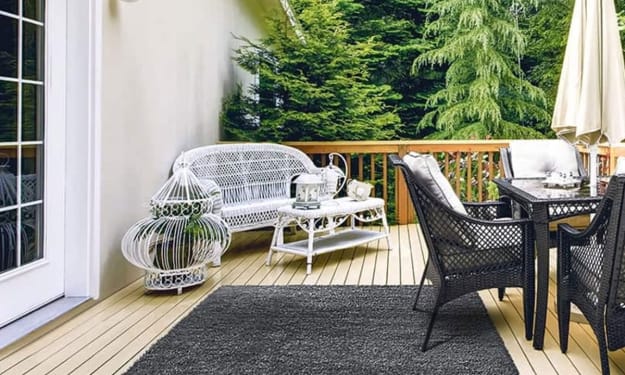How to Clean Your Chimney
A clean, well-maintained chimney will prevent money and stop trouble—and, yes, there are parts of the work you'll do yourself.

A clean, well-maintained chimney will prevent money and stop trouble—and, yes, there are parts of the work you'll do yourself.
If you've got a chimney, it'll need cleaning—that’s a fact. But when and how often does one need to clean your chimney? The solution depends on a variety of things, including how often it’s used, what fuel you’re burning, and even what material your flue is formed from.
Why Clean the Chimney?
The biggest concern is chimney fires, which occur when creosote build-up that condenses inside chimneys from wood smoke catches fire. Are often "> this is often commonest with wood stoves but can be a drag with fireplaces also. consistent with the Chimney Safety Institute of America (CSIA), chimney fires can reach 2,000F, which is hot enough to crack masonry chimney liners and potentially start a fireplace within the surrounding wood framing.

Tips for Keeping Your Chimney Clean
Burning well-seasoned, dry wood is a method to attenuate creosote production. (Green wood burns at a cooler temperature, producing more combustion byproducts and colder smoke that’s more likely to condense within the flue.
Also, older wood stoves could also be more likely to make creosote than new ones. “EPA-certified wood stoves burn more efficiently than older non-certified models, leading to less creosote buildup within the chimney,” says the EPA. Still, the EPA, CSIA, and therefore the National Fire Protection Association (NFPA) all say that even chimneys servicing newer wood stoves should be inspected and cleaned annually.
Chimney Cleaning for Wood, Gas, and Oil Fireplaces
Any chimney that vents a fuel burning appliance, even non-wood-burning ones like gas-fired or oil-fired boilers, furnaces, or water heaters, should be inspected by a CSIA certified chimney sweep.
Although creosote isn’t a worry with gas or oil, there are two other concerns:
First, particularly with oil, there’s an opportunity for enough soot build up to dam the chimney and cause deadly carbon monoxide gas to leak into your house.
Second, with either fuel, a number of the combustion byproducts can combine with water that condenses from the exhaust to make an answer that’s corrosive enough to wreck the flue liner. Over time, that damage is often extensive enough to permit flue gasses into your home.

While wood stove chimneys and people for heavily used fireplaces should be cleaned annually, it’s likely your gas or oil chimney only needs A level 1 inspection. The NFPA lists three levels of inspection:
Level 1 may be just a visible check for dangerous deposits within the chimney and for structural soundness.
Level 2 inspections are generally done only for reception sales and when changing from one sort of fuel to a different. (Level 2 inspections also make sure the chimney has the right clearance to combustibles.)
Level 3 inspections are done when structural damage is suspected.
How to Clean Your Chimney
While it’s a really good idea to possess the chimney inspected by a CSIA professional, serious DIYers can do some maintenance themselves. Here are the steps for cleaning your chimney yourself:
First, take an honest check out of the flue. You would possibly be ready to inspect the chimney from rock bottom, either by looking up from the fireside with a flashlight or through the cleanout with a flashlight and mirror.
The best view is from above, however, to try to do this, you’ll get to be above the chimney looking down, which suggests you’ll get to be ready to use ladders and get on a roof safely and comfortably.
Remove the chimney cap and shine a flashlight into the flue.
Whether from above or below, search for damage to the flue and for build-up of a black, flak‑y substance. That’s creosote.
If you discover creosote, the chimney needs cleaning. If you notice damage, you would like a professional who’s conversant in NFPA Standard 211 to form repairs.
Tools for Cleaning a Chimney
Most people are more happy hiring a professional, and permanently reason. Chimney cleaning is a smaller amount straightforward than it's going to seem, and it’s employment where experience counts. That said, with the proper tools, skills, and knowledge of what to look for, it’s possible for a seasoned DIYer to wash their own chimney.

Buy a chimney brush that’s sized and shaped to suit your flue, and enough extension rods to run the flue’s entire length (rods are available 4-, 5-, and 6-foot lengths). For masonry flues, use a metal brush, and for chrome steel ones, use a poly brush.
To use a chimney brush, follow these steps:
Close the door to the wood stove, or tape plastic across the fireside opening.
Working from above, with the damper open and therefore the chimney cap removed, thread on the primary rod.
Insert the comb into the flue, push it down, scrubbing up and down as you go.
Thread on additional sections of rod as required and repeat the scrubbing until you reach rock bottom.
Once the comb is out of the chimney, look inside to ascertain if you’ve removed all the creosote. If you haven’t, repeat the method.
Once the flue is clean, use a store vacuum to get rid of all the soot and creosote that’s fallen into the lower areas.
About the Creator
Nancy Thigpen
I am Nancy and welcome. I am an individual who is positive about every aspect of life. There are many things I prefer to try to do, to see, and to experience. I prefer to read, I prefer to write; I prefer to think, I prefer to concentrate.






Comments
There are no comments for this story
Be the first to respond and start the conversation.